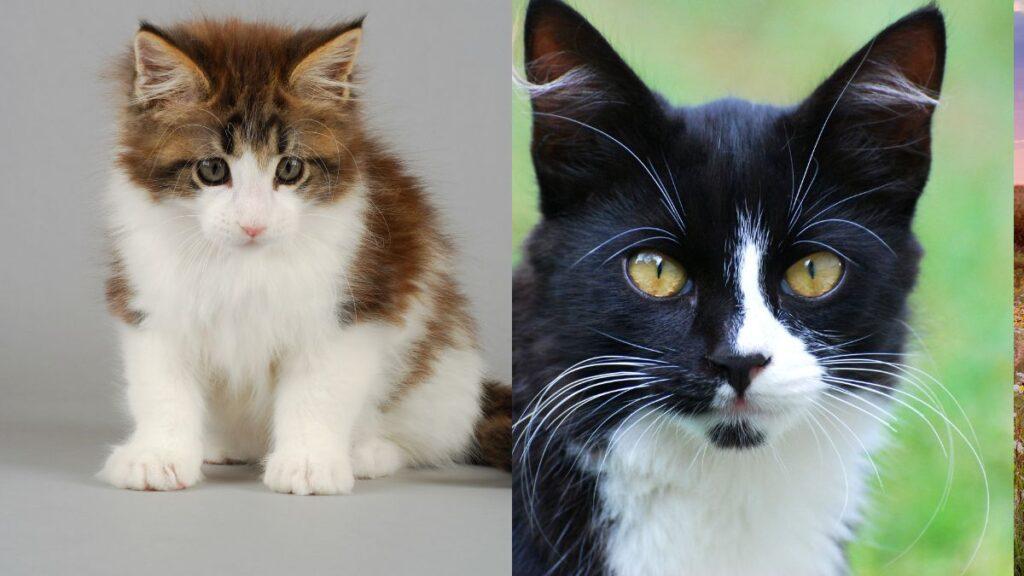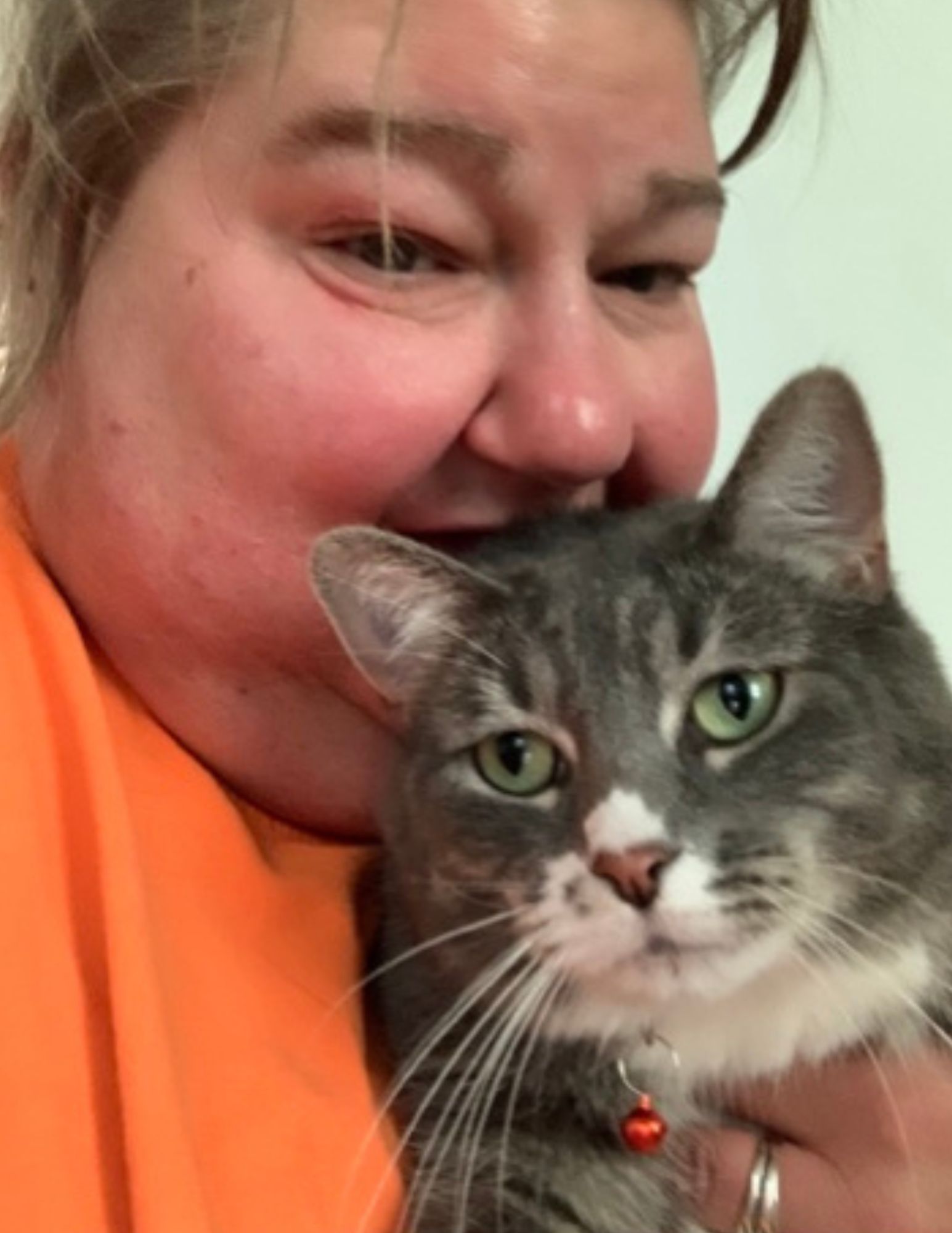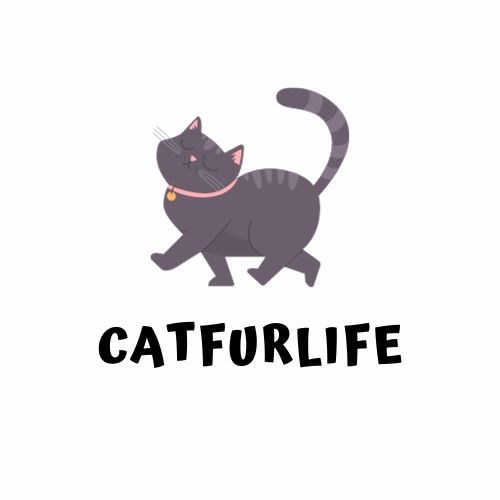The vast and varied world of feline breeds has gifted us with truly captivating creatures. Among them, some stand out not just for their striking appearances but also for their grandeur and stature.
Predominant among these are the Maine Coon and the Siberian. Both breeds are celebrated as the “gentle giants” of the cat realm, often captivating onlookers with their impressive size and luscious, thick coats.
To the casual observer, the Maine Coon and the Siberian might appear strikingly similar, perhaps differing only in name. However, upon closer examination, myriad unique characteristics distinguish these two majestic breeds in terms of history, temperament, physical attributes, or health considerations.
While they both command respect and admiration for their size and beauty, understanding the nuances that set them apart can help potential cat owners, breed enthusiasts, and curious onlookers appreciate each breed for its own individual charm and legacy.
Maine Coon vs Siberian: A Tale of Two Gentle Giants

Origins and History
Maine Coon: The Maine Coon, native to Maine in the United States, holds a special place in American feline folklore. Often hailed as one of the oldest natural breeds in North America, its exact origins remain shrouded in mystery, making it a subject of various intriguing tales.
One of the most famous legends suggests that the Maine Coon is a descendant of cats brought over by Viking explorers around the 11th century.
These cats believed to be Norwegian Forest cats, are said to have mixed with the local domestic felines, leading to the genesis of the Maine Coon.
Another theory postulates that the Maine Coon descended from cats Marie Antoinette sent to America during the French Revolution. While these stories are fascinating, concrete historical evidence is lacking.
Regardless of its beginnings, the Maine Coon was admired for its hunting abilities, particularly in dealing with rodent infestations. Its popularity multiplied, and by the late 19th century, it regularly won prizes at cat shows.
The breed’s physical characteristics—long tufted ears, bushy tail, and robust build—made it well-equipped to survive the harsh winters and varied climates of the Northeastern US.
Siberian cat: The Siberian cat, sometimes called the Siberian Forest cat, boasts a rich history that stretches back over a thousand years in Russia. Folktales and Russian children’s books often featured these majestic felines, indicating their deep cultural significance.
Hailing from the unforgiving climates of Siberia, this breed developed unique features to adapt to its environment. The triple-layered coat of the Siberian cat is a testament to its survival instincts.
This includes a glossy top coat that repels water, a dense middle layer, and a soft, thick undercoat providing insulation against cold temperatures. Additionally, their powerful legs made them agile jumpers, capable of catching prey in the dense Siberian forests.
While the Siberian cat has been known in Russia for centuries, it only came to the United States in the 1990s. Since then, its hypoallergenic qualities and pleasant nature have made it an increasingly popular choice among cat enthusiasts and families.
In understanding these breeds, it’s fascinating how their respective environments played a pivotal role in shaping their physical characteristics and temperaments. Both the Maine Coon and the Siberian cat, with their storied pasts and distinctive features, continue to charm cat lovers around the world.
Related: Manx Maine Coon Mix Cat: A Stubby Tailed Feline Breed
Physical Traits

Size and Build: The Maine Coon and the Siberian cats are renowned for their impressive sizes, earning them the title of the ‘gentle giants’ in the domestic cat world.
Their robust and muscular frames are reminiscent of the shared ancestry of formidable hunters. These cats are built sturdy with broad chests and powerful legs, making them agile and adept in the wild.
Maine Coon: Male Maine Coons are especially large, with some reaching or exceeding 15-20 pounds or more. In exceptional cases, some males can even surpass 20 pounds. Females are slightly smaller, typically weighing between 8 and 12 pounds.
Siberian: Male Siberians also fall in a similar weight range as the Maine Coons, often weighing between 8-12 pounds, although some can weigh significantly more. Females, like their Maine Coon counterparts, are generally a bit lighter.
Head and Face: The two breeds have distinguishable facial structures.
Maine Coon: The Maine Coon is recognized for its square or rectangular head. Their high cheekbones give them a distinct wild appearance.
One of the most notable features is their large, tufted ears, which often have lynx-like tips. These tufts serve a functional purpose, protecting the ears from cold temperatures and aiding in pinpointing sounds while hunting.
Siberian: The Siberian cat’s face is shaped like an equilateral triangle, with a slightly rounded head. Their eyes are large and oval-shaped.
They can come in various colors, including green, gold, and blue. Unlike the Maine Coon, their ears are medium-sized and are set more to the sides, fitting the contours of their rounded face.
Fur and Tail: Both breeds are blessed with luxurious coats, but subtle differences in texture and appearance exist.
Maine Coon: The Maine Coon’s fur is semi-long and dense, with a shaggier, ruff-like appearance around the neck, giving them a lion-like mane.
Their fur varies across their bodies, shorter on the shoulders and longer on the belly and britches. This variance in fur length is an adaptation to wading through snow while protecting its underside.
Siberian: The Siberian cat’s coat is plush and has three layers, making it water-resistant. It is slightly smoother and more even in length compared to the Maine Coon.
Their bushy tails are reminiscent of the cold Siberian climates, serving as a rudder for balance and as a warm wrap against icy winds.
With their striking appearances and functional adaptations, both these breeds showcase nature’s brilliance in equipping creatures to thrive in diverse environments.
While they share several physical traits, each breed has unique characteristics that make them stand out.
Related: The Allure of the Maine Coon Lynx Mix
Health and Care

Health Concerns:
Despite their robust appearance, giant breeds can be susceptible to specific health issues. Awareness and proactive care can go a long way in ensuring their well-being.
Maine Coon:
- Hypertrophic Cardiomyopathy (HCM): This is the most common heart disease in cats, and Maine Coons are especially susceptible. It involves the thickening of the heart muscles, which can lead to heart failure. Regular cardiac screening can help in early detection and management.
- Hip Dysplasia: Maine Coons, due to their larger size, can sometimes suffer from hip dysplasia. It’s a genetic condition where the hip joint doesn’t fit into the hip socket properly, leading to arthritis or lameness. Regular vet check-ups and maintaining a healthy weight can aid in managing the condition.
- Spinal Muscular Atrophy: This genetic disorder affects the spinal muscular nerves, causing muscle wasting. While it sounds concerning, affected cats don’t suffer from pain and lead everyday lives.
Siberian:
- Hypertrophic Cardiomyopathy (HCM): Like the Maine Coon, some Siberians can also be prone to HCM. Regular check-ups and early detection are key.
- Dental Disease: Siberians sometimes can be prone to dental issues. Brushing their teeth, providing dental toys, and having regular dental check-ups can help prevent disease.
Related: Maine Coon Tabby Mix Short Hair: Characteristics and Care Tips
Grooming and Care:
Maintaining their splendid coats isn’t just about aesthetics; it’s vital for their health, too.
Maine Coon:
- Their long, dense fur can become tangled, especially around the chest and underbelly. Regular brushing, at least 2-3 times a week, can prevent matting. During shedding seasons, daily brushing might be required.
- Their tufted ears can trap dirt. Regular cleaning with a vet-approved solution can help prevent infections.
Siberian:
- The Siberian’s triple-layer coat is dense and can become matted if not cared for. Regular brushing, at least 3-4 times a week, is essential, especially during shedding seasons.
- Bathing can be done occasionally but dry slowly due to their water-resistant coat. Ensure they’re thoroughly dry to prevent skin issues.
For Both Breeds:
- Regular eye cleaning, nail trimming, and dental care are integral to their grooming routine.
- Diet plays a crucial role in their health. Given their larger size, monitoring their weight and ensuring they get a balanced diet is essential.
While these breeds may have specific health concerns, regular veterinary care, a balanced diet, and proper grooming can lead to healthy, happy lives.
Related: Why is my Cat so Small? Understanding Feline Growth Patterns
Allergies and The Feline Factor
Understanding Fel d 1: The primary allergen responsible for triggering allergic reactions to cats in sensitive individuals is called Fel d 1. It is a protein in cat saliva, skin oils, and urine.
When a cat grooms itself, the protein gets transferred to its fur. As the fur sheds or as dander (tiny flakes of skin) becomes airborne, it can cause allergic reactions to this protein in sensitive individuals. Symptoms can range from mild sneezing and watery eyes to severe asthma attacks.
Siberian Cats and Allergies: The Siberian cat breed is often touted as more suitable for individuals with cat allergies. Studies have indicated that many Siberians produce fewer Fel d 1 proteins than other breeds.
As a result, people with mild cat allergies tend to have fewer or less severe reactions to Siberians.
However, it’s important to note a few things:
- Not all Siberian cats produce low levels of Fel d 1; there can be variations within the breed.
- Individuals with severe allergies or asthma should spend time around a Siberian cat to assess their reactions before adopting.
- While Siberians might produce fewer allergens, they are not completely hypoallergenic. The term “hypoallergenic” suggests a reduced potential for causing an allergic reaction, not an absence of allergens.
Maine Coons and Allergies: The Maine Coon, as majestic and lovable as it is, has not been notably associated with reduced Fel d 1 production.
As such, they fall into the same category as most other cat breeds regarding allergen production. Individuals allergic to cats might exhibit typical allergic reactions when exposed to a Maine Coon.
Managing Cat Allergies: Regardless of the breed, if one is considering adopting a cat and has known allergies, here are some general tips:
- Spend time around the breed before adopting.
- Keep bedrooms cat-free to ensure a space with fewer allergens.
- Invest in a high-quality air purifier.
- Regular grooming and bathing of the cat can reduce the amount of dander and dried saliva on their fur.
- Wash hands after handling the cat and avoid touching the face.
- Regularly clean and vacuum the home, preferably with a vacuum cleaner equipped with a HEPA filter.
While the Siberian breed might be a more feasible option for those with mild cat allergies, it’s essential to remember individual reactions can vary. Spending time around any potential feline companion to gauge allergic responses before committing.
Related: Maine Coon Cat Lifespan: The Longevity of the Gentle Giants
Personality and Bonding
Maine Coon:
- Gentle Giants: Despite their imposing size, Maine Coons are often called “gentle giants” because of their sweet, friendly nature. They get along well with children, cats, and even dogs.
- Playful Prowess: Maine Coons retain their playful nature well into adulthood. They love toys, especially toys that challenge their intelligence and hunting instincts. They’re known to play fetch and can be quite active, requiring toys and playtime to stay mentally stimulated.
- Vocal Variety: These cats are quite vocal and possess a range of meows, chirps, and trills. They’re likely to converse with their owners, making them a very interactive companion.
- Water Fascination: Unlike many cats, Maine Coons are often fascinated with water. They commonly play with water dishes, watch faucets, or even attempt to join their owners in the shower.
- Loyal and Affectionate: While they may not always be “lap cats” due to their size, they tend to form strong bonds with their families. They follow their owners around and like to be in the same room, often acting as a quiet, loyal companion.
Siberian:
- Warm-hearted Warriors: Siberians have a warm and affectionate temperament. Their history in the harsh climates of Siberia has imbued them with resilience, yet they are incredibly loving and gentle with their families.
- Energetic Explorers: Siberians are lively and playful. Their agile bodies and keen senses make them excellent climbers and jumpers. A cat tree or climbing shelves would be a great addition to a Siberian’s environment.
- Dog-like Devotion: Many Siberian owners compare their cats’ behaviors to those of dogs. They can be taught to fetch, come when called, and walk on a leash. Their loyalty is often evident as they shadow their owners throughout the house.
- Social Butterflies: Siberians are sociable and do well in households with other pets, be it cats, dogs, or even smaller animals. Their patient and gentle nature makes them great companions for children as well.
- Intuitive Nature: One of the unique traits of Siberians is their ability to sense their owner’s mood. They provide comfort during distress or sadness, often sitting close to offer silent support.
Common Traits and Bonding in Both Breeds:
- Adaptability: Both breeds are adaptive to new environments and people. They can acclimate well to changes, making them suitable for moving or traveling families.
- Training Potential: Their intelligence and desire to engage make both the Maine Coon and Siberian more amenable to training than some other breeds. Positive reinforcement techniques work best.
- Deep Bonds: While they may have moments of independence, both breeds deeply bond with their families. They thrive on interaction and can become quite attached to their human companions.
Both Maine Coons and Siberians are affectionate, engaging, and intelligent breeds. They thrive in environments where they can form deep bonds and regularly interact with their families.
Their personalities, combined with their majestic appearance, make them genuinely exceptional companions in the feline world.
In the realm of feline aficionados, Maine Coon cats and their counterpart, the Norwegian Forest cat, represent two of the most majestic large cats.
At first glance, their thick fur, semi-long fur, and distinctive appearance, especially their long hair and square muzzle, might make them appear quite similar to other long-haired cats like Himalayan cats. However, the main difference lies deeper than their blue eyes or fluffy tails.
Rooted in cold weather environments, Maine Coon cats, with their water-resistant fur, broad body shape, muscular build, and large paws, are adept at navigating harsh weather.
Their history traces back a long time, with tales intertwining wild cats and seafarers. On the other hand, Siberian cat origins hail from the icy terrains of Russia, with a dense coat and middle coat adapted for survival.
Though the Maine Coon breed and its similar-looking counterparts, like the Norwegian forest cat, have long coats perfect for cold climates, it’s their personality traits and affectionate nature that stand out.
Notably, the Maine Coon cat breed, despite its large size, has a heart as big as its frame, often dedicating much time to bond with its human counterparts.
Their playful nature, combined with their prominent chest and large size, sets them apart in the international cat association rankings. However, while these big cats have an allure, potential owners should be aware of potential health problems inherent in such a large breed.
Another significant difference emerges when considering allergy sufferers. With their unique genetic makeup, Siberians often come as a great choice for those sensitive to feline allergens.
But making an informed decision between male Siberian cats, Maine Coon cats, or any other breed of cat requires thorough research.
These breeds, with their water-resistant fur and affinity for spending a lot of time bonding, have been admired for generations, from the wild landscapes of ancient territories to modern living rooms.
In essence, whether it’s the main coon cat’s dog-like devotion or the Himalayan’s enigmatic gaze, the best way to understand and appreciate these breeds is through experience, embracing both their majestic aesthetics and their deep, unwavering companionship.

Meet Ann Haasnoot, the passionate founder of CatFurLife.com. A lifelong cat lover from Wisconsin, Ann combines her extensive feline behavior and care knowledge with her love for writing. On her website, she shares invaluable insights about cat breeds, care tips, and her experiences with her beloved furbaby, aiming to deepen the bond between cats and their human companions.

